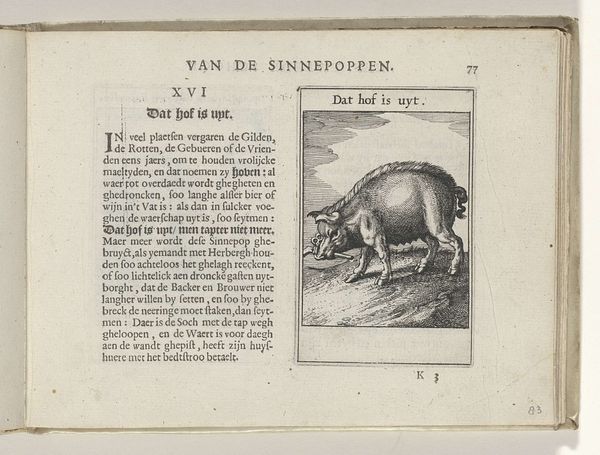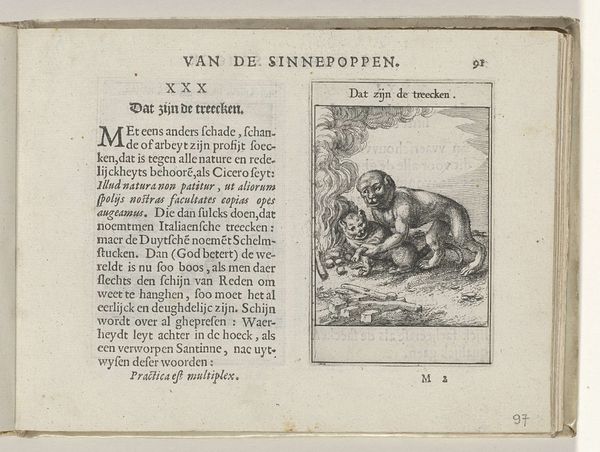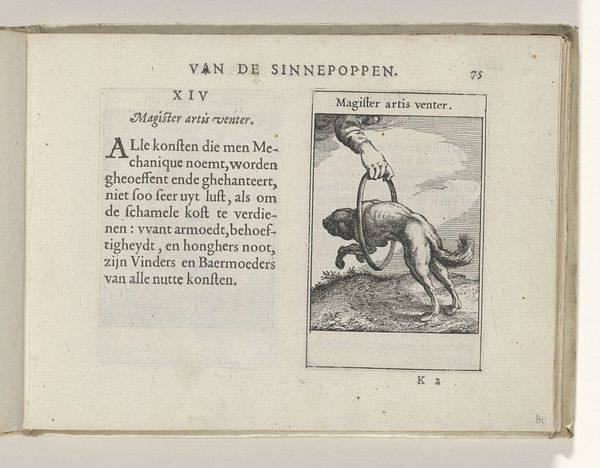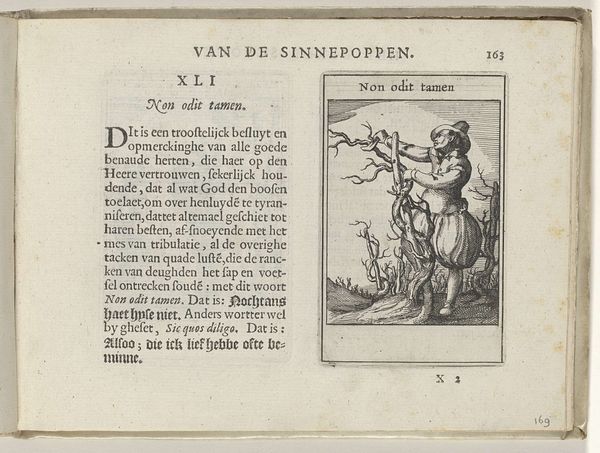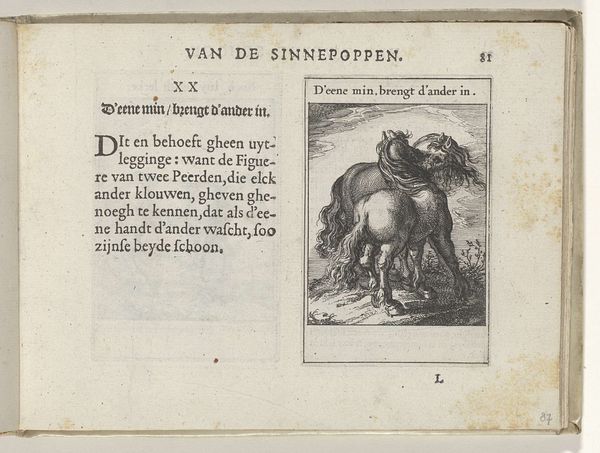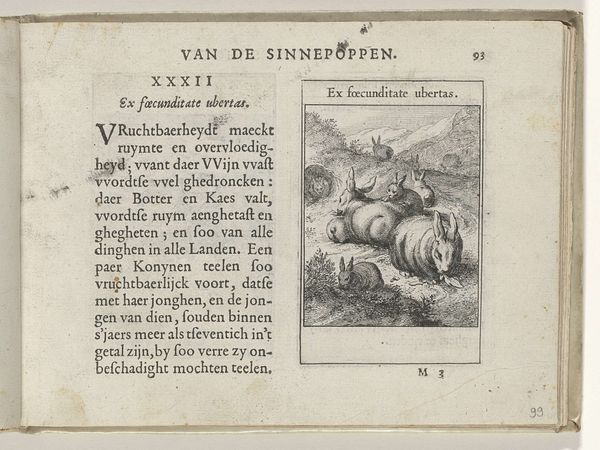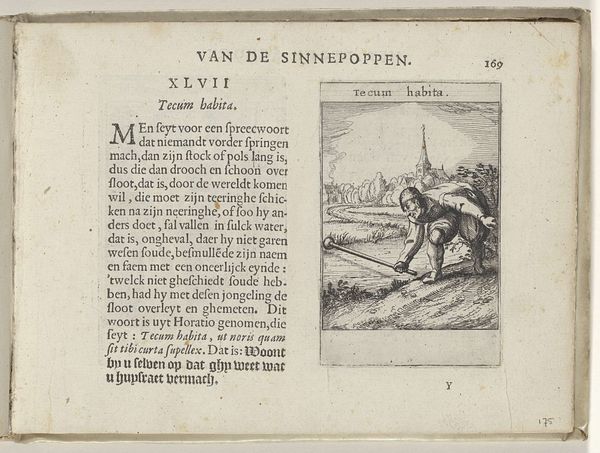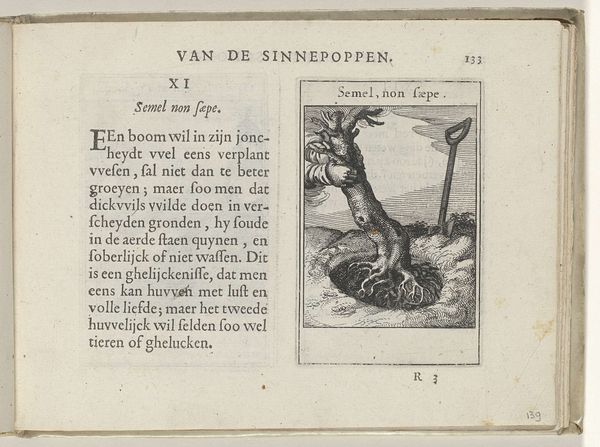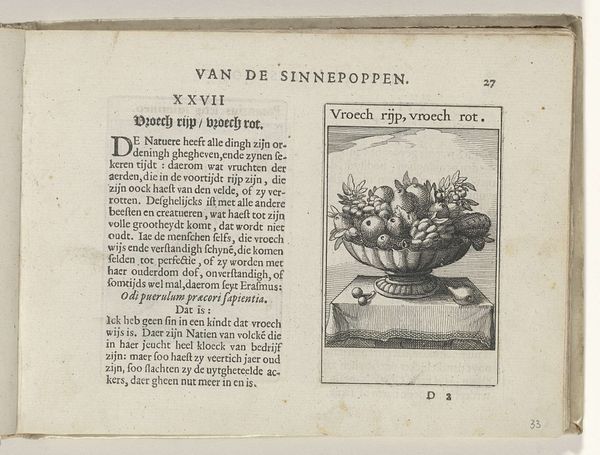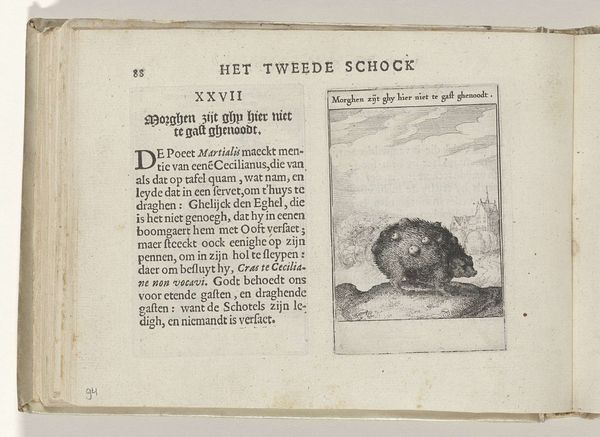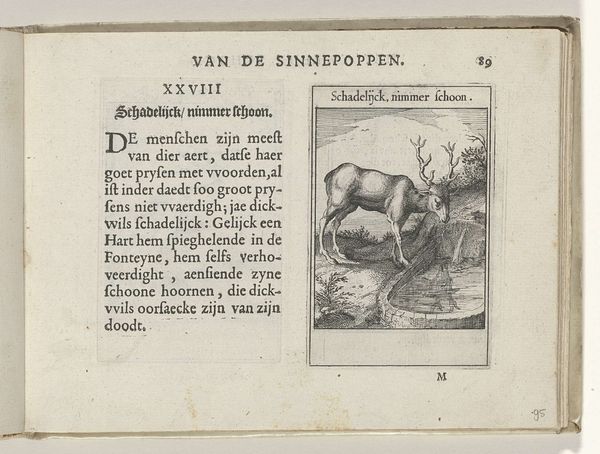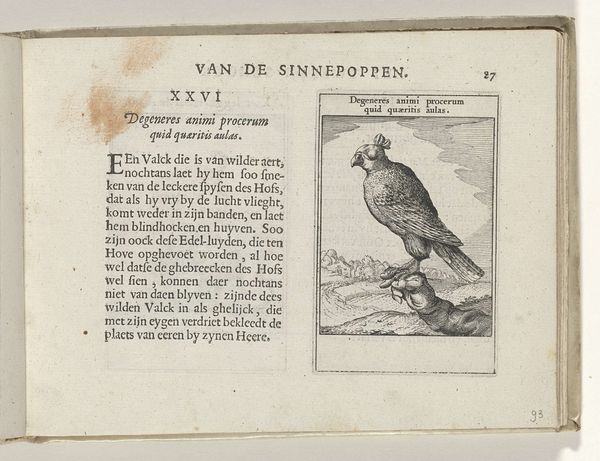
print, engraving
#
narrative-art
#
baroque
# print
#
genre-painting
#
engraving
Dimensions: height 137 mm, width 188 mm, height 95 mm, width 60 mm
Copyright: Rijks Museum: Open Domain
Curator: Here we have "XXIV Cum vult, potest" created in 1614 by Roemer Visscher. This engraving on display here at the Rijksmuseum is quite small, almost unassuming at first glance, but its message packs a punch. Editor: It certainly has a somber feel, doesn't it? The heavy lines of the engraving, particularly in the lion's mane, create a sense of unease. There's a tension between the predator and the potential prey. Curator: The inscription, “Cum vult, potest," means "When he wants, he can," adding to that tension. It is an emblem print with a distinct relationship to the socio-political environment of its time, speaking about power dynamics and warning the beholder about dangerous hierarchies. The lion obviously symbolizing power. Editor: Exactly. And consider the composition: the lion dominates the foreground, crouching low and seeming to leer, while the sheep stands precariously on that rock behind him, almost as a visual footnote. The line work is especially heavy and deeply incised in the fur of the lion suggesting the opulence of its role and body compared with that of the shorn wooly body of the sheep. It really emphasizes the vulnerability. Curator: This piece sits within the broader narrative tradition, specifically emblem books, using allegorical imagery to convey moral or political messages, which enjoyed popularity within burgeoning 17th-century Dutch society. Editor: These stark contrasts remind us that the artist has made specific aesthetic choices to present the relationship. Curator: Precisely, it's a potent reminder of how visual art could be weaponized in conveying and also manipulating cultural ideas. Editor: It is, perhaps, through recognizing how stark the opposition between predator and prey looks within these aesthetic choices that we might start reflecting on our own world, maybe even become motivated toward finding social resolutions. Curator: Thank you. I find that the value in studying emblem prints from the Dutch Golden Age is that they offer the tools to reflect on how humans see one another as social actors. Editor: Indeed, by isolating the basic parts, you invite anyone to feel what each is doing for themselves. It provides viewers a feeling that everyone is participating on some similar terms.
Comments
No comments
Be the first to comment and join the conversation on the ultimate creative platform.
